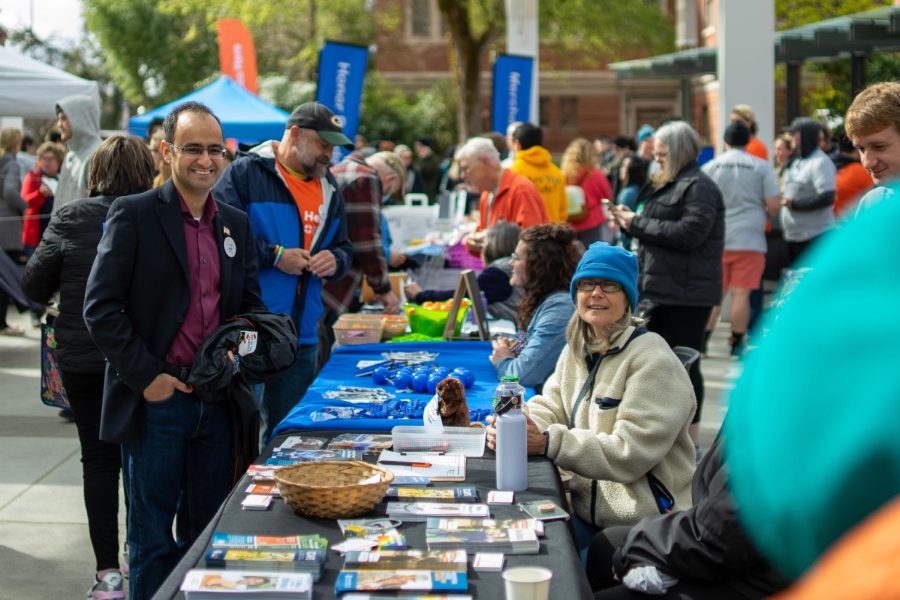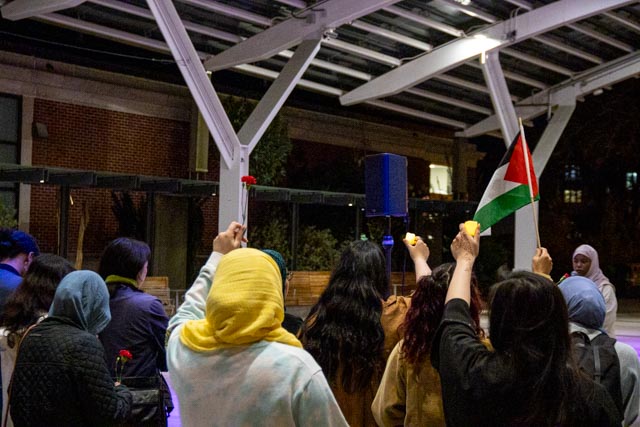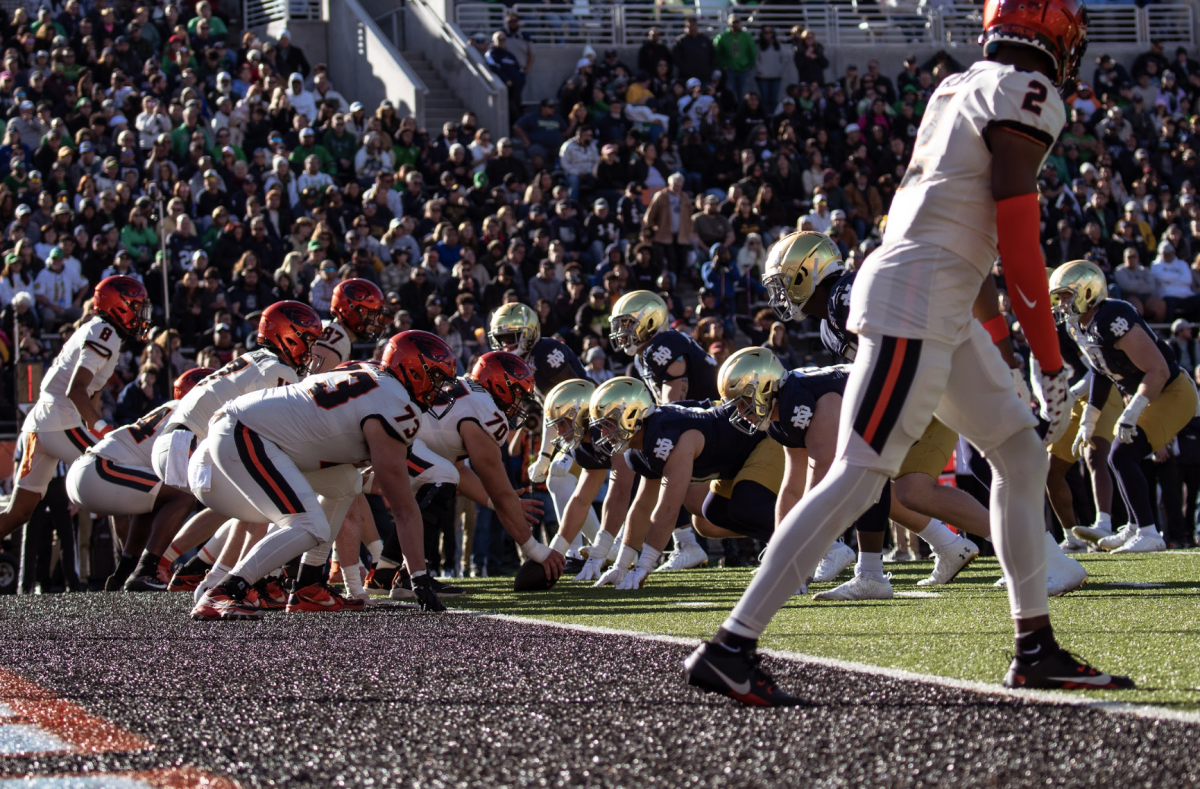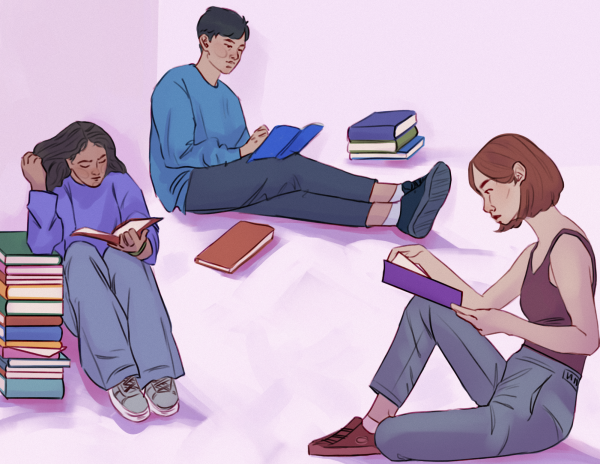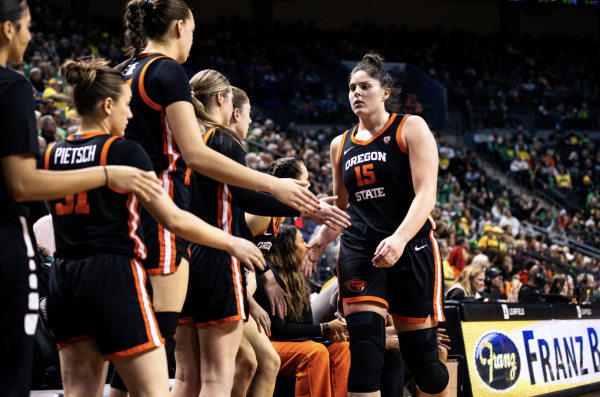Dr. Tech: Tech gifts that keep on giving
December 2, 2015
Dr. Jon Dorbolo
Several holidays are clustered around Winter Solstice and some of these traditions involve gift-giving for which I have suggestions of tech-related offerings that won’t bust your budget and include ways to give learning, well-being, ideas, tools, compassion and creativity.
Give learning: Since you are involved in higher education it is relevant for you to share learning.
“The Great Courses” produces high-quality life-long learning resources. Topics from their huge catalog range from practical skills like cooking and photography to the sciences and humanities. The programs come in various video and audio formats which you purchase as single courses, all of which have outlines and previews online for you to sample.
“Lynda.com” is an excellent subscription service for learning skills in programs like Excel, Word, Photoshop, Acrobat, Quickbooks, Filemaker, Google Analytics, Audacity, WordPress and much more.
“MindTools” is a subscription service for the business-minded person with more than 1,000 bite-sized training articles, audios, videos, interviews, quizzes, and activities for upgrading knowledge of topics such as leadership, time management, decision making, strategy, communication, stress management and problem-solving.
Give well-being: You probably know people who may benefit from the contemporary approach to self-improvement though games which are online subscription services that are mobile-compatible and have free versions that you may try out online.
“Happify” is designed to help players to disrupt patterns of negative thinking, manage stress and build resilience.
“Superbetter” incentivizes players to set goals and aspirations in order to identify and overcome challenges.
“Mindbloom” uses a garden and tree metaphor to organize and track components of personal growth.
“Luminosity” helps players exercise memory, task switching, information processing, attention, reasoning, numerical calculation, verbal fluency, and is a strong option for someone whose age is impacting their cognitive strengths.
Give ideas: A book gives someone something to think about and several recent titles address issues in technology.
“What to Think About Machines That Think: Today’s Leading Thinkers on the Age of Machine Intelligence” edited by John Brockman consists of in brief well-developed essays by
187 experts from a wide range of areas who address the question “What Do You Think About Machines That Think?”
“The Shallows: What the Internet is Doing to Our Brains” by Nicholas Carr examines the evidence for the idea that information technology is changing how humans think, mostly for the worse according to Carr.
“Pax Technica” by Philip N. Howard investigates how the emerging “internet of things” – the interconnection of everyday objects such as cars, clothes, trees through information technology – may change our economic, political and social systems, mostly for the better according to Howard.
“Turing’s Cathedral” by George Dyson tells the story of the development of the computer in the post-World War II period.
“Countdown to Zero” by Kim Zetter tells the story of the first offensive weaponized cyber-attack by the Stuxnet worm that sabotaged 20 percent of Iran’s nuclear centrifuges in 2010.
“Superforecasting: The Art and Science of Prediction” by Philip E. Tetlock and Dan Gardner tells the story of the future and how science is improving methods for predicting what is likely to happen next.
“Information Graphics” by Sandra Rendgen communicates the world of information through over 60 infographics which are likely to fascinate everyone.
Give Tools: When an item is both useful and affordable you have a strong gift candidate.
“Automatics Connected Car Adapter” plugs into a hidden data port, usually just under the steering column, built into most cars since 1996 and connects the car’s diagnostic system to a mobile app in order to track data such as fuel-efficiency and warning signals.
“Tile” is a little plastic square that attaches to objects like a set of keys or TV remote that can then be located using a mobile app via Bluetooth.
“Gameband + Minecraft” is a wearable bracelet that holds an executable Minecraft game as well as saved worlds and works as a watch too.
“Google Cardboard VR” viewer turns anyone’s mobile phone into a mind-blowing 3D experience for $5 to $25.
Ross Dress for Less in Corvallis has a unique gadget section, inexpensive toys and nice cookware odds and ends for cheap.
Many Hands Trading in the OSU Memorial Union has lots of cool items from around the globe.
Give compassion: A charitable donation in someone’s name is very satisfying for the right person when given to a relevant agency, of which three reputable instances with online donation and notification are –
“St. Jude Children’s Hospital” helps children with life-threatening illnesses.
“Linn Benton Food Share” helps hungry people in and around Corvallis.
“Heartland Humane Society” helps animals in and around Corvallis.
Give creativity: A one-of-a-kind gift that comes from your own thought and effort is priceless.
3D print original gifts using the Valley Library 3D printers and online guides.
Make a custom book or calendar out of your photos and writing using the self-publishing platforms at “Lulu, “Blurb,” and “Createspace.”
You could download space pictures from NASA and make a calender using galactic images and deep quotes.
Blurb offers an app to create a photo book out of someone’s Facebook pages.
Give back to students: At the start of the term I announced a clicker registration raffle hosted by OSU’s Information Services (IS). The time frame of the raffle was extended so that all OSU students who own a fully registered and licensed Turning NXT or Turning QT that is connected to Canvas by 5 p.m. Friday November 20, 2015 were eligible for one of the following Beaver Store gift certificates: $10, $25, $50 and $100.
On Monday, Nov. 23, Technology Across the Curriculum (TAC) employees selected 17 ONID names by random lookup from a comprehensive list of all registered clicker owners as defined above.
Those 17 ONID names were printed onto separate slips of paper which were folded and placed into a hat (actually a candy bowl from the Halloween party) and successively drawn by a neutral individual to be paired with a Beaver Store gift certificate starting with the low denominations and ending with the $100 gift certificate.
The 17 winners have been notified by ONID mail with instructions on how to claim their prizes. Prizes that go unclaimed after Friday Dec. 18 by the terms of the instructions in the notification email will be reassigned by random drawing from the list of all registered clicker owners as noted above.
Congratulations to the winners, but we at TAC think you are all winners.
Many students made the effort to register their clickers and showed much patience and civility to those of us working to help.
We appreciate your classy Beaver spirit and with you a superb end of term and restorative winter break.


